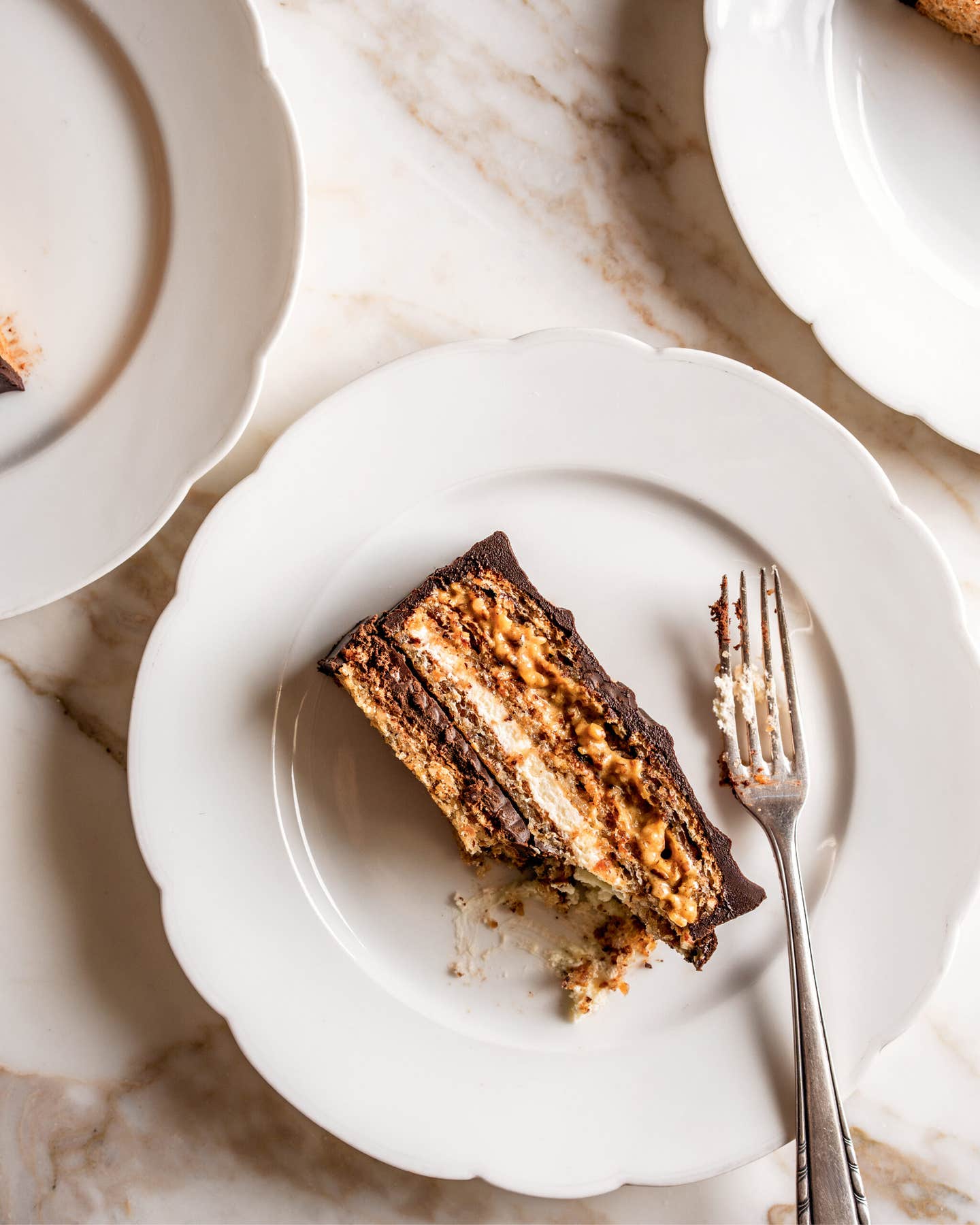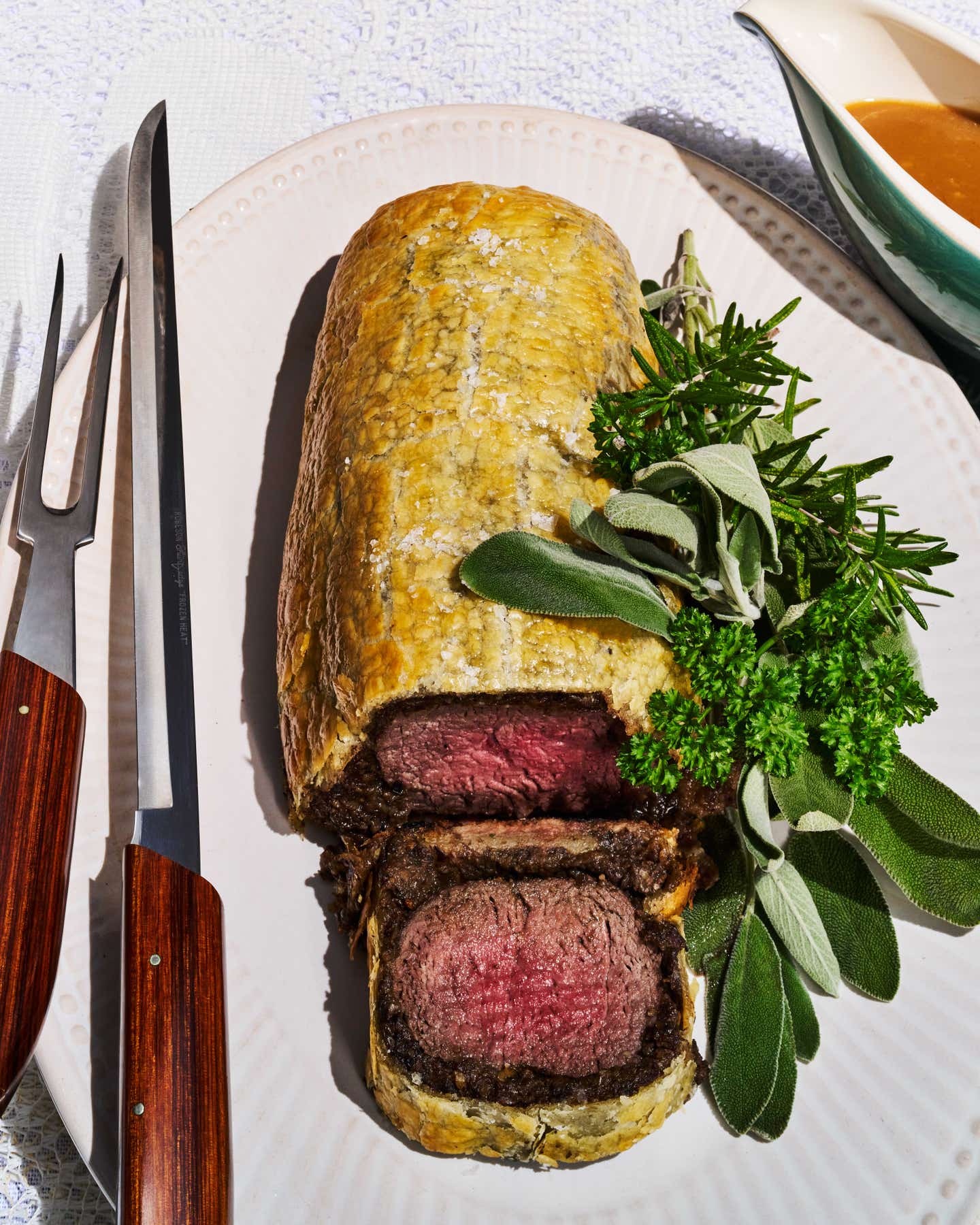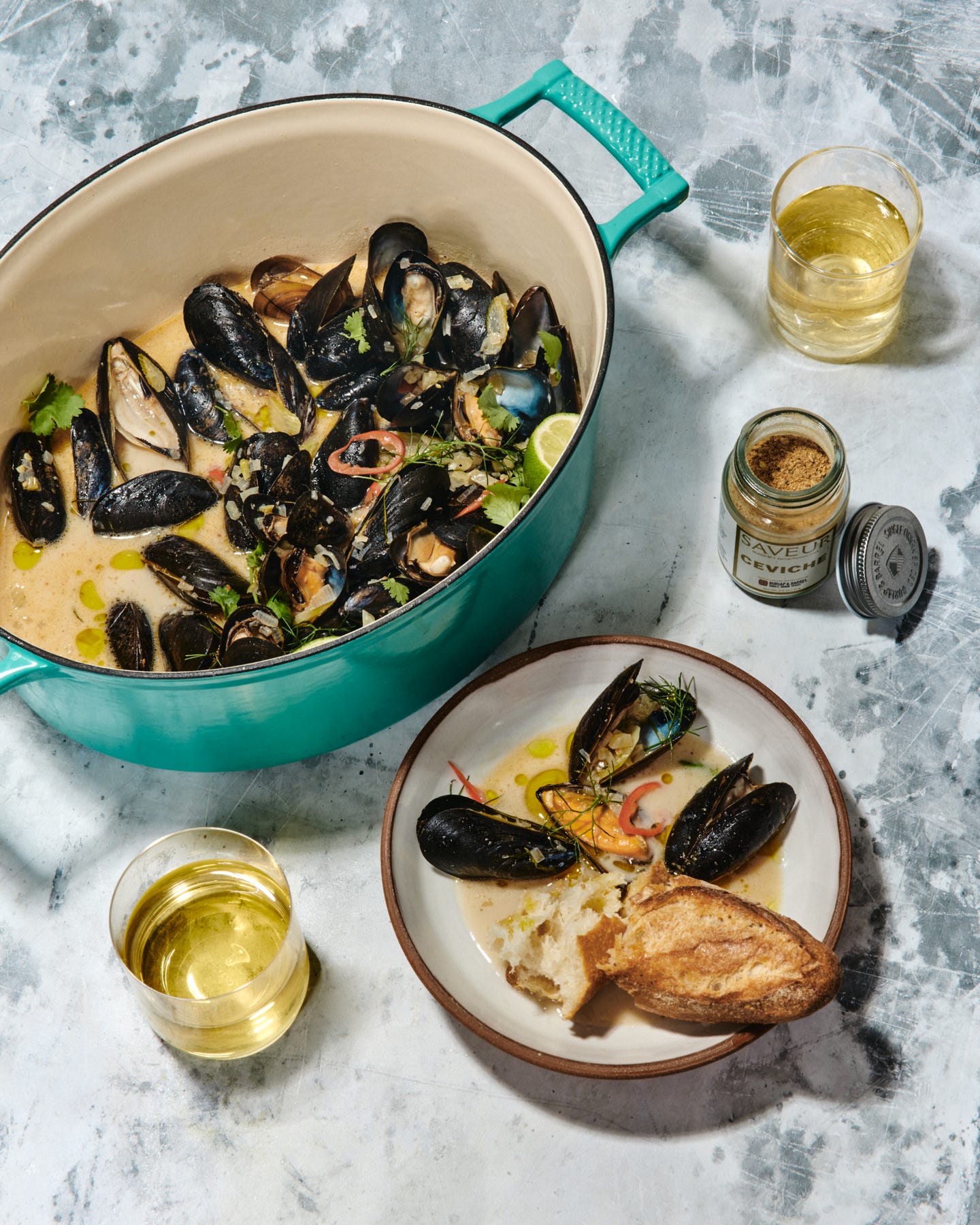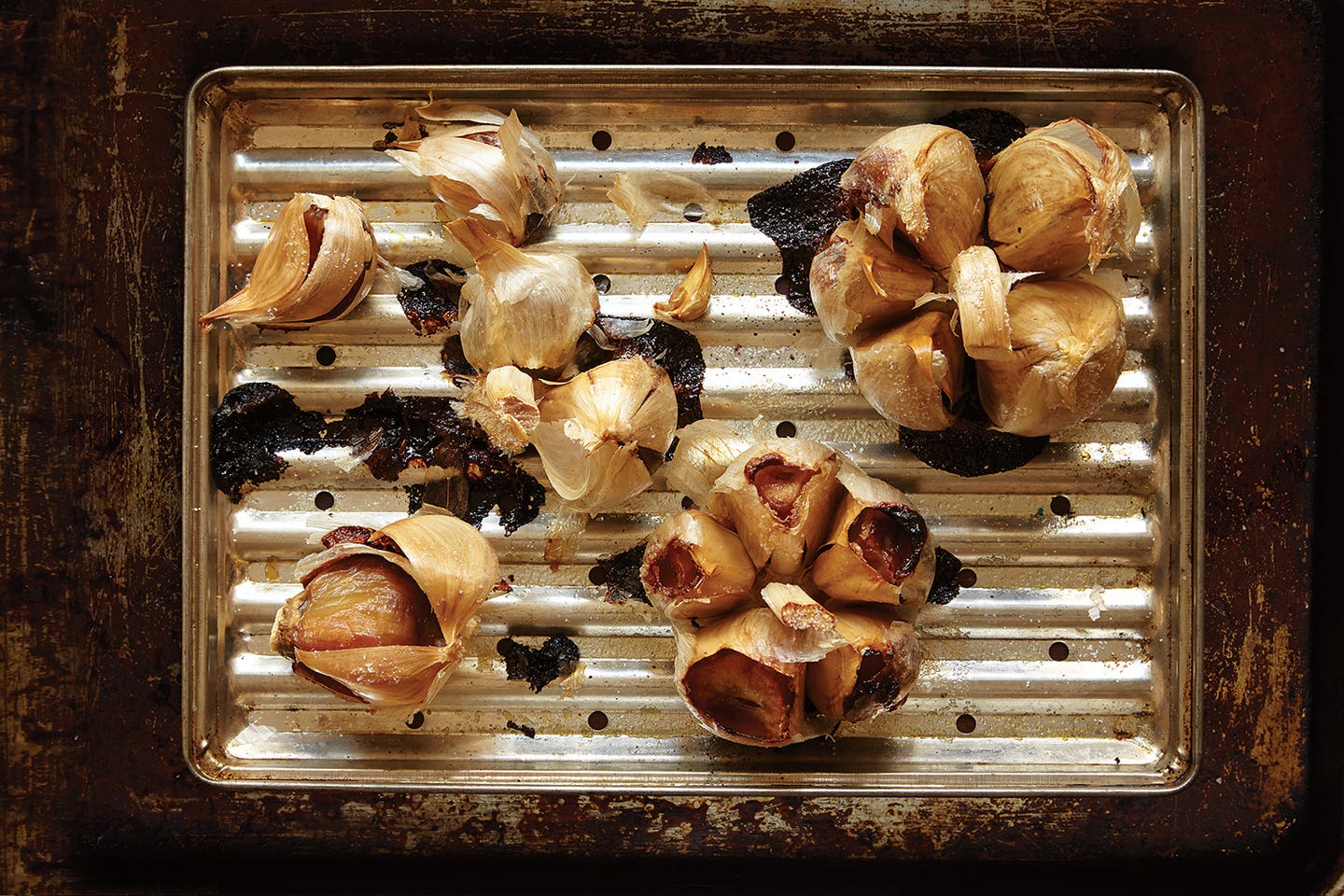
The Glories of Garlic
In all of its many forms and in kitchens around the globe, the lusty and pungent allium garlic is the flavor of comfort
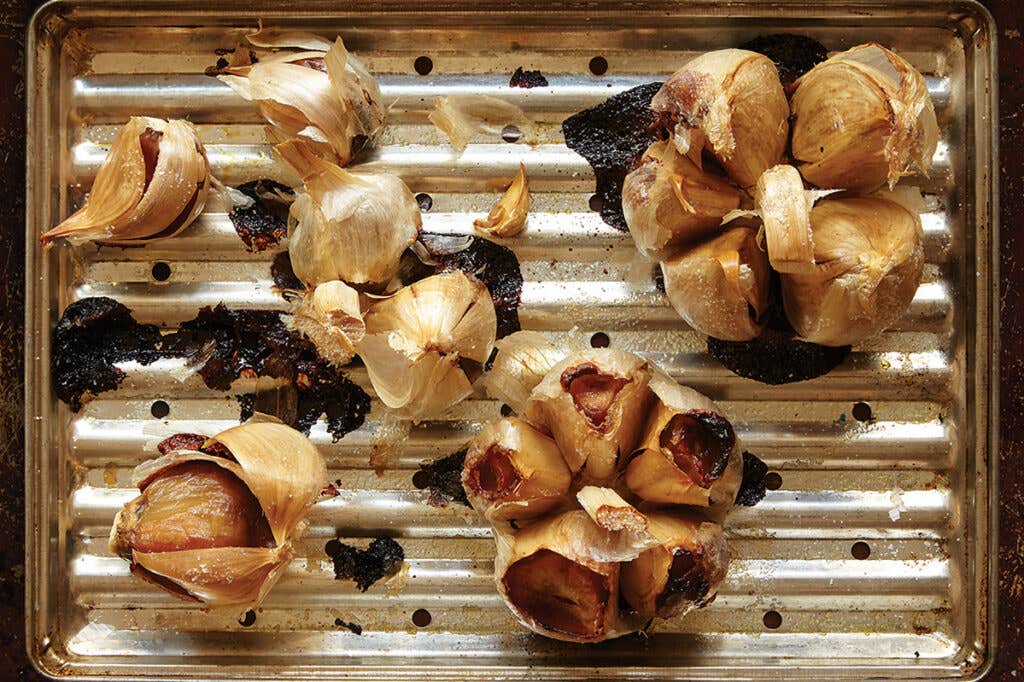
When I was a child, I would sometimes wake up at night to the aroma of frying garlic. Teased out of bed by the warm, nutty fragrance, I would pad downstairs to the kitchen in my footed pajamas to find my younger brother, similarly clad, already sitting on the counter. My dad, who often worked late, coming home long after the rest of the family had gone to bed, would be putting the final touches on his dinner, tossing spaghetti in the pan along with tuna and sundried tomatoes, and topping it all with a shower of parmesan. My brother and I ate with my dad, wolfing down our clandestine midnight meal before returning to bed.
To this day, nothing gets my appetite going as reliably as the scent of sizzling garlic. But although I have always loved it, I never gave it much thought. Garlic was garlic. What was there to know?
My first inkling that there might be more to it came during a year spent in the country of Georgia in 2005. On my first visit to a sprawling open-air market in the capital city of Tbilisi, I spotted something I'd never seen before: purple garlic. I took a few heads back to my apartment, where I broke them open. The plump cloves, snugly encased in stippled, burgundy-colored skins, were so young that they were still sticky; they clung to my fingertips when I tried to peel them. An experimental nibble of one raw slice unleashed a fierce lash of heat that made my eyes water. I flattened a half-dozen cloves with the side of a knife, minced them, and sautéed them in a pan. As my dad used to do, I stirred in spaghetti and dove in. The toasty, potent flavor of the garlic saturated the strands of pasta in a way that was at once familiar and also more intense.
That year in Georgia, I used garlic with greater abandon than usual. I loved it in tabaka, a small whole chicken rubbed with garlic paste, cooked under a weight in an iron skillet, and served in a pool of butter, with a side of niortskali, a sauce of pan drippings fortified with raw garlic and cilantro. I learned to savor the zesty bite that uncooked garlic brought to an herb-packed walnut paste used to stuff fried eggplant. I even noshed on whole pickled heads of it, the snappy, vinegared cloves as satisfying to eat as potato chips.
It was fitting that my introduction to the wider world of garlic took place in Georgia. Garlic originated in Central Asia and spread from there. Early on it was cultivated in Egypt, where, 5,000 years ago, it was prized for its medicinal and culinary uses; in China, where it was an integral part of the diet 2,000 years ago; and in ancient Greece and Rome, where it was used mostly as a medicine. It's one of mankind's oldest crops.
Garlic is an allium, a genus in the lily family that includes onions and leeks. What we call the garlic "head" is actually the swollen bases of the plant's leaves. Sugars and carbohydrates generated through photosynthesis are channeled downward into the ground, where the leaf bases swell to form a cluster of bulblets—what we know as garlic cloves. The garlic head absorbs additional nutrients, including sulfur, from the soil, and it is the compounds derived from sulfur that help to give garlic its complex character. When the cloves are chopped, the sulfur compounds and an enzyme called alliinase, usually held separate within the clove, come into contact with one another in a collision that generates the compound allicin, which gives garlic its pungency, and pyruvic acid, which is responsible for its spicy heat.
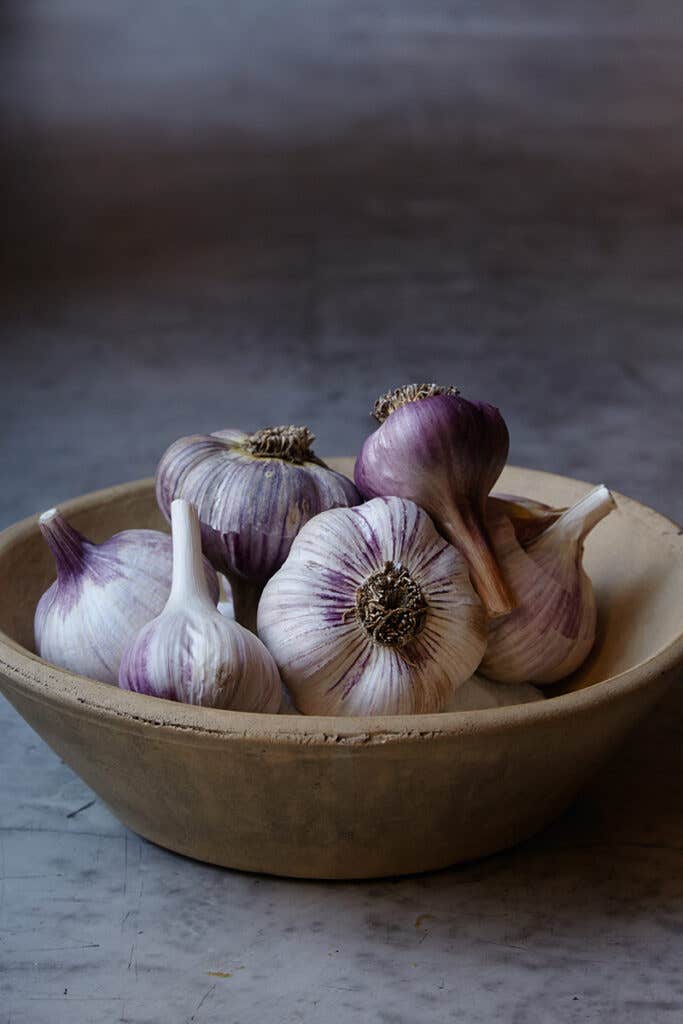
In its raw state, crushed garlic brings fire to condiments, and it's fundamental to some of the world's oldest dishes, such as ajo blanco, a cold, bracing Spanish soup of garlic, bread, and puréed almonds that dates to the eighth century. But cooking this allium yields a plethora of irresistible fragrances, flavors, and textures. When fried, with the heat mellowing the acid in the cloves, garlic harmonizes beautifully with soy sauce, ginger, and chiles for a perfect sauce to accompany pan-seared fish. Chopped and sautéed until golden, it gently infuses dishes like garlic-steamed Manila clams. Left whole, so that its volatile compounds don't interact, garlic offers an entirely different character. Roasting or frying whole cloves draws out their sweetness, yielding a sumptuous confit that I love to mix with sautéed greens or use to adorn focaccia.
A year after my introduction to Georgian garlic, I was back in the United States, looking for more of the stuff. I came across Thaxton Family Farm, a small, organic outfit in Hudson, Ohio, that carries a Georgian variety, along with a dozen others. I ordered a few of each, and they arrived a couple of days later with their wizened stems and leaves still attached. There was Georgian Crystal, which delivered a blast of heat when raw; Music, a German variety with enormous cloves and a nearly sugary flavor; and Pskem, from Uzbekistan, boasting fat cloves with a hazelnut aroma and off-white skin with dramatic purple stripes. Each made the ones at my local supermarket seem bland in comparison. What, I wondered, accounted for the difference? I called the farmer, Fred Thaxton, for an answer.
Thaxton explained that all garlics belong to one of two varieties: softneck garlic (Allium sativum) and hardneck garlic (Allium ophioscorodon). "We grow only hardnecks, which have a much stronger, truer garlic flavor," he said. Hardnecks have a woody central stalk surrounded by a single circle of large cloves. Because of their propensity to sprout, they don't last long in storage, usually around seven months; but they make up for their shorter life with intensity and richness of flavor. Softneck garlics, which have a soft central stem surrounded by several layers of cloves, tend to be milder. They don't typically sprout during storage, so they keep very well, generally for about nine months, making them ideal for the shipping needs of commercial farms. The other key difference, he noted, is simply a matter of freshness: The longer garlic sits around, the more its moisture and essential oils dissipate. Around 80 percent of all of the garlic sold in the United States is of the softneck variety, shipped from China. These lose flavor in transit before landing in supermarket bins.
As enthusiasts discover the pleasures of fresh garlic grown close to home, farmers are meeting our demands. Across the U.S., there are hundreds of heirloom varieties now available. But heirloom garlic has been growing here for decades, and at one California farm, it has achieved large-scale success.
Late one morning this past summer, as I drove California's Highway 101 into Gilroy, 80 miles south of San Francisco, I swore I could smell garlic on the wind. The city of Gilroy is the largest producer of garlic in the U.S. The aroma can be so intense that humorist Will Rogers used to joke that in Gilroy "you can marinate a steak just by hanging it on the clothesline."
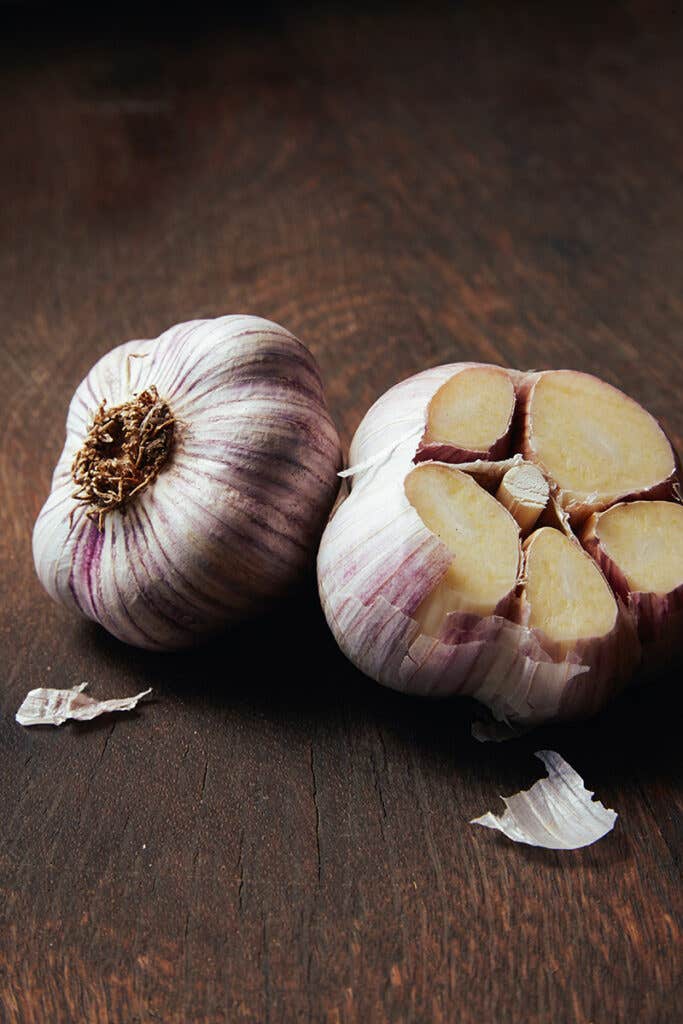
The town has been an epicenter for garlic since the 1940s, when a Japanese seed farmer, Kiyoshi Hirasaki, first grew garlic on a commercial scale there. For a time, he was the largest garlic grower in the country. During the Second World War, Hirasaki was interned, along with more than 120,000 other Japanese-Americans, and though he returned to his farm after the war, today the city's major garlic grower is Christopher Ranch. Founded in 1956, the farm grows 70 million pounds of garlic annually, 90 percent of the entire American crop. Much of it is the Italian cultivar Monviso, which founder Don Christopher brought over early on from Piedmont.
Christopher Ranch also cofounded the Gilroy Garlic Festival, which is now in its 36th year and boasts two tons of garlic donated from the farm. I timed my visit to coincide with the event. The temperature was breaching 100 degrees that day, but more than 80,000 people had gathered to celebrate all things garlic. I made a beeline for a big white tent where 200 volunteer cooks were turning out dishes that offered a snapshot of garlic's versatility. There were bowls of spaghetti in an emerald green pesto, stuffed mushroom caps, flambéed calamari in garlic sauce. I sat in the shade, balancing plates on my knees, and happily devoured it all.
Before I left the fairgrounds, I picked up a heavy braid of garlic to bring home. It was thickly plaited with plump heads the size of my fist. On the drive back to San Francisco, I thought about how I would cook it. I might fry slices into chips for spaghetti, or chop and whip it into mashed potatoes. I might pair those potatoes with short ribs perfumed with whole braised cloves. But whatever I would make, I knew it would be garlicky—and I knew it would be good.
Keep Reading
Continue to Next Story
